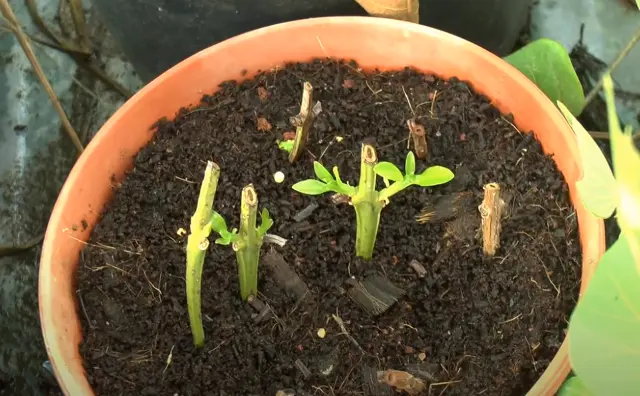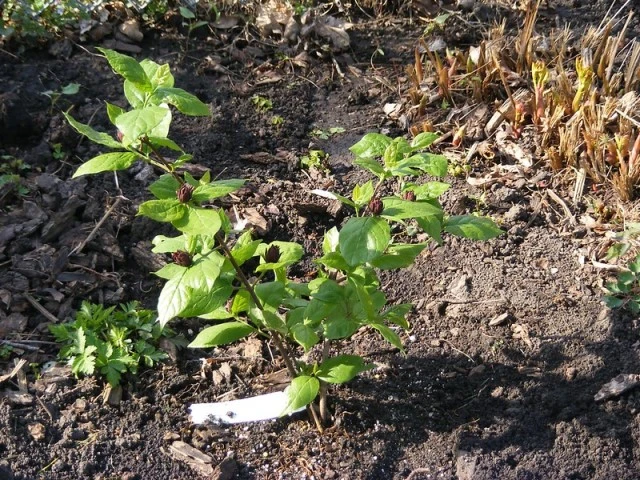Carolina allspice, also known as sweetshrub or strawberry bush, is a delightful addition to any garden with its fragrant blooms and attractive foliage. Propagating this beautiful shrub allows you to multiply your plants and share their beauty with others. Whether you’re a seasoned gardener or just starting out, here’s a comprehensive guide on how to propagate Carolina allspice successfully.
Understanding Carolina Allspice
Before delving into propagation techniques, it’s essential to understand the characteristics of Carolina allspice. This deciduous shrub is native to the southeastern United States and thrives in moist, well-drained soil and partial shade. It’s prized for its aromatic flowers, which bloom in late spring to early summer, emitting a spicy, clove-like fragrance that attracts pollinators.
Carolina allspice typically grows up to 6-9 feet tall and wide, forming a rounded shape with glossy green leaves. Its flowers vary in color from deep red to burgundy, adding a pop of color to the landscape.
Propagation Methods

1. Softwood Cuttings
Softwood cuttings are taken from the current season’s growth, usually in late spring to early summer. Follow these steps for successful propagation:
- Select a healthy, non-flowering stem from the parent plant, preferably one with several sets of leaves.
- Using sharp, sterilized pruning shears, cut a 4-6 inch section of the stem just below a leaf node.
- Remove the leaves from the lower half of the cutting to expose the nodes.
- Dip the cut end of the cutting into rooting hormone powder to encourage root growth.
- Plant the cutting in a well-draining potting mix or directly into the ground in a shaded area.
- Keep the soil consistently moist and provide bottom heat to encourage root development.
- After a few weeks, gently tug on the cutting to check for resistance, indicating root growth.
2. Layering
Layering is another effective method for propagating Carolina allspice, especially for older, established plants. Follow these steps:
- Identify a low-growing branch that can be easily bent to the ground without breaking.
- Remove any leaves from the selected section and make a shallow wound on the underside of the branch.
- Dust the wounded area with rooting hormone to stimulate root growth.
- Dig a small trench beneath the wounded section and bury it in the soil, securing it with a U-shaped wire or small stone.
- Keep the soil consistently moist, and roots should form within a few months.
- Once roots have developed, sever the newly rooted section from the parent plant and transplant it to its desired location.
MORE POSTS: How to grow thyme from store-bought thyme?
Care Tips for Newly Propagated Plants
After successfully propagating Carolina allspice, proper care is crucial to ensure the health and vigor of the new plants:
- Watering: Keep the soil evenly moist, especially during the establishment period. Avoid overwatering, as this can lead to root rot.
- Light: Provide partial shade or dappled sunlight to prevent sunburn on newly propagated plants.
- Fertilization: Apply a balanced fertilizer during the growing season to promote healthy growth and flowering.
- Mulching: Apply a layer of organic mulch around the base of the plants to retain moisture and suppress weeds.
- Pruning: Prune lightly to maintain a tidy shape and remove any dead or diseased branches.
Conclusion
Propagating Carolina allspice is a rewarding endeavor that allows you to expand your garden and share the beauty of this fragrant shrub with others. Whether you prefer softwood cuttings or layering, following these techniques will increase your chances of success. With proper care and attention, your newly propagated plants will flourish, adding charm and fragrance to your outdoor space for years to come.
MORE POSTS: How to grow a mulberry tree from a cutting?

